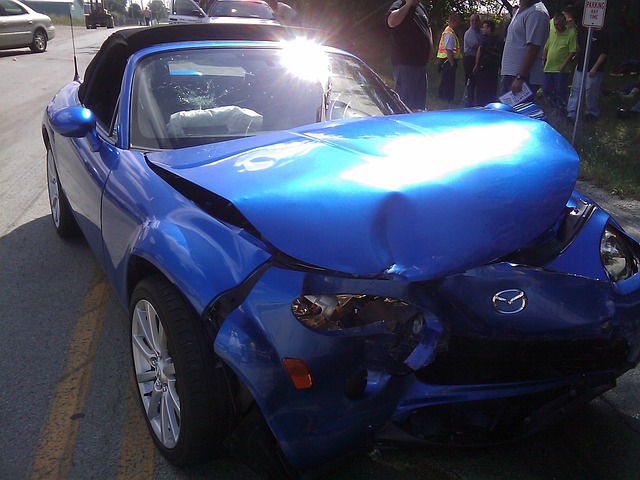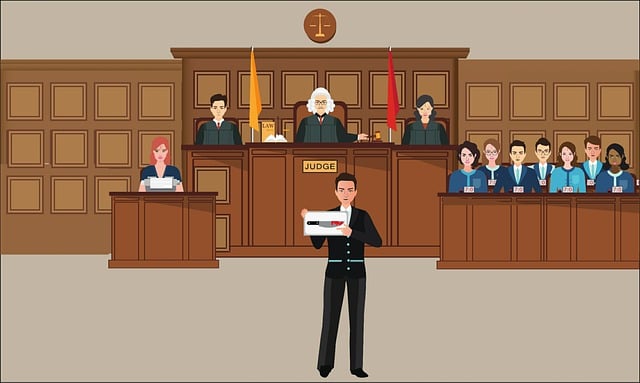Compensation for Icy Sidewalk Falls: Understanding Your Legal Rights

Understanding liability is key in navigating cases involving icy sidewalk falls, with property owner…….
Welcome to an in-depth exploration of a critical yet often overlooked aspect of urban life: icy sidewalk falls. This phenomenon, prevalent during winter months, poses significant risks to pedestrians, businesses, and municipal authorities alike. In this comprehensive article, we will dissect the multifaceted problem, its global impact, and the strategies employed to mitigate its dangers. From economic implications to technological innovations, we aim to provide a holistic view of icy sidewalk falls, offering insights for better understanding and addressing this seasonal challenge.
Definition: Icy sidewalk fall refers to the hazardous condition that arises when water seeps into cracks and crevices on sidewalks, freezes, and transforms into ice, making pedestrian areas slippery and potentially dangerous. This process often occurs during winter seasons in regions with cold climates.
Core Components:
Water Intrusion: The initial step involves water finding its way into sidewalk cracks through rain, melting snow, or other sources. This water can be carried by surface runoff or infiltrate the ground.
Freezing Temperature: When temperatures drop below freezing (0°C or 32°F), the intruded water freezes, transforming from liquid to solid and creating ice formations.
Ice Formation: Over time, as more water freezes, it expands and can cause cracks to widen, leading to uneven or broken sidewalk surfaces. Ice may form smooth sheets, rime (ice with a sharp, crystalline edge), or a mix of both.
Historical Context: The issue of icy sidewalks has been a seasonal concern for cities worldwide for centuries. Ancient Roman engineers were among the first to recognize and attempt to mitigate ice-related hazards by designing drainage systems to prevent water accumulation. However, it is during modern times that technological advancements and policy interventions have become crucial in tackling this challenge effectively.
Icy sidewalk falls are a universal concern, impacting cities across all continents, but the severity and frequency of these incidents vary significantly by region:
Northern Europe and North America: Countries like Canada, Scandinavia, and parts of the United States experience prolonged periods of cold, making icy sidewalks a common occurrence. For instance, Toronto, Canada, receives an average of 127 cm (50 inches) of snow annually, followed by freezing temperatures, leading to extensive ice-related issues.
Eastern Europe and Asia: Cities in these regions often face unique challenges due to rapid temperature changes and heavy snowfall. Moscow, Russia, for example, has a continental climate with severe winters, making icy sidewalks a year-round problem.
Southern Europe and Australia: While less affected by icy walks during winter, these regions experience their own seasonal challenges related to heat and flooding, which can lead to similar infrastructure issues.
Trends Shaping the Trajectory:
Urbanization and Population Growth: The increasing urban population exerts pressure on municipal infrastructures, exacerbating the impact of icy sidewalks. More pedestrians and vehicles mean higher risks and demands for efficient snow and ice management.
Climate Change: Rising global temperatures are altering weather patterns, leading to more extreme weather events. This phenomenon can result in earlier or later onset of winter, affecting the timing and intensity of icy sidewalk falls.
Technological Advancements: Innovations in weather forecasting, sensors, and data analytics enable better prediction and monitoring of ice-related hazards, allowing for proactive measures.
The economic implications of icy sidewalk falls are multifaceted and significant:
Direct Costs: The most apparent expense is the financial burden on municipalities for snow removal, ice melting, and repair or replacement of damaged sidewalks. According to a study by the National Snow and Ice Association (NSIA), the average cost per mile of maintaining streets and sidewalks in the U.S. during winter is approximately $1.4 million.
Indirect Costs: Icy sidewalks contribute to economic losses through reduced business productivity, increased worker compensation claims due to slips and falls, and potential legal liabilities for property owners. A 2019 report by IBISWorld estimated that slip and fall injuries related to icy conditions cost U.S. businesses over $17 billion annually.
Market Dynamics: Snow removal equipment and services experience increased demand during winter months, leading to price fluctuations and supply chain adjustments. Additionally, the insurance sector adapts its policies and pricing based on regional ice and snow trends.
Investment Patterns: Cities invest in advanced snow and ice management systems, such as heated sidewalks, smart sensors, and efficient deicing products, to improve safety and reduce long-term costs.
Technological innovations play a pivotal role in transforming the way icy sidewalk falls are managed:
Heated Sidewalks: One of the most groundbreaking solutions involves incorporating heating elements into sidewalks to prevent ice formation. This technology has been successfully piloted in several cities, including Helsinki, Finland, and Oslo, Norway. Heated sidewalks can maintain safe temperatures below the freezing point, eliminating icy conditions.
Smart Sensors and Data Analytics: Advanced sensors monitor real-time temperature, moisture levels, and ice thickness, providing valuable data for decision-makers. This information enables efficient deployment of resources and targeted deicing treatments, minimizing waste and environmental impact.
Autonomous Snow Removal Vehicles: Autonomous or semi-autonomous snowplows and clearing machines are revolutionizing snow and ice removal operations. These vehicles use GPS, sensors, and advanced navigation systems to clear paths quickly and safely, reducing labor costs and improving efficiency.
Artificial Ice Melting Agents: Researchers are developing eco-friendly deicing chemicals that are more effective and environmentally sustainable than traditional salt (calcium chloride). These agents can minimize damage to sidewalks and reduce the ecological impact of winter maintenance operations.
Governments worldwide have implemented various policies and regulations to address icy sidewalk falls, focusing on public safety, liability, and efficient infrastructure management:
Local Ordinances: Many cities have enacted laws requiring property owners and businesses to clear snow and ice from sidewalks within specific time frames. Non-compliance can result in fines or legal action. For instance, New York City’s Code requires the removal of snow and ice within 24 hours of accumulation.
National Guidelines: Some countries provide national guidelines and recommendations for safe winter maintenance practices. These guidelines often include best practices for deicing, snow clearing, and maintaining clear sidewalks to minimize risks.
Liability Laws: Legal frameworks addressing slip and fall injuries related to icy conditions vary by jurisdiction. In general, these laws aim to hold property owners and municipalities accountable for maintaining safe public spaces. The specifics of these laws significantly impact how winter maintenance programs are implemented.
Incentives for Adoption of New Technologies: Governments offer incentives and grants to encourage the adoption of innovative solutions like heated sidewalks, smart sensors, and eco-friendly deicing products. These initiatives aim to modernize winter maintenance practices and improve safety.
Despite significant progress in addressing icy sidewalk falls, several challenges and criticisms persist:
Cost Implications: Implementing advanced technologies and comprehensive snow removal programs can be expensive, posing financial burdens on municipalities and taxpayers. Balancing the benefits of improved safety with the costs remains a challenge.
Environmental Concerns: Traditional deicing salts can cause environmental harm, damaging sidewalks and water bodies. The search for eco-friendly alternatives is ongoing, but effective and cost-viable solutions are still being developed.
Variability in Weather and Urban Geographies: Different cities and regions experience unique weather patterns and urban layouts, making it challenging to implement one-size-fits-all solutions. Heated sidewalks, for instance, may not be feasible or cost-effective in all settings.
Public Acceptance and Engagement: Ensuring public compliance with snow removal ordinances can be difficult, especially in areas with high residential turnover rates or limited community engagement. Educating residents about the importance of clear sidewalks is crucial but requires ongoing efforts.
Proposed Solutions:
Collaborative Approaches: Encouraging partnerships between municipalities, private companies, and academic institutions to share research, technologies, and best practices can drive innovation and efficiency.
Data-Driven Decision Making: Utilizing advanced analytics and real-time data to optimize snow and ice management strategies, ensuring resources are allocated where they are most needed.
Community Engagement: Implementing public education campaigns and incentives to promote responsible snow removal and awareness of icy conditions.
Research and Development Funding: Continued investment in research and development for eco-friendly deicing agents, heated sidewalk technologies, and other innovative solutions.
Helsinki’s initiative to install heated sidewalks in a significant portion of its city center has been widely celebrated as a success story. The project involved laying cable heating systems beneath selected streets and sidewalks, maintaining temperatures above freezing. The results were remarkable:
Reduced Ice Formation: The heated sidewalks significantly minimized ice accumulation, making walking safer and more pleasant during winter months.
Cost-Effectiveness: While the initial installation costs were high, long-term savings resulted from reduced snow removal efforts and lower maintenance expenses for damaged sidewalks.
Public Acceptance: Helsinki’s residents embraced the idea, with surveys indicating high satisfaction levels and a sense of improved safety.
Lessons Learned: Heated sidewalk technology is a viable solution for regions with cold climates, offering both safety benefits and cost savings over traditional snow removal methods. However, it requires significant upfront investment and careful planning to ensure efficient and effective deployment.
Toronto’s comprehensive snow management system integrates advanced technologies, data analytics, and community engagement:
Smart Sensors Network: The city deployed a network of sensors to monitor temperature, moisture, and ice conditions in real time, providing valuable insights for decision-makers.
Data-Driven Strategies: Using sensor data, Toronto optimized its deicing operations, targeting high-risk areas first and reducing overall salt usage by 15%.
Community Snow Clearing Program: The city encouraged residents to clear snow from sidewalks in front of their homes, with incentives for those who needed assistance. This program improved accessibility for elderly and disabled residents.
Outcomes: Toronto’s integrated approach led to safer sidewalks, reduced environmental impact, and improved efficiency in winter maintenance operations. The use of data analytics demonstrated the potential for technology to enhance public safety and resource management.
The future of icy sidewalk fall management is poised for further innovation and integration of advanced technologies:
Artificial Intelligence (AI) Integration: AI algorithms can analyze historical weather data, sensor feeds, and real-time conditions to predict ice formation patterns with unprecedented accuracy. This capability enables proactive snow removal and deicing strategies.
Drone Technology: Drones equipped with cameras and sensors can inspect sidewalks and identify hazardous ice patches or damage. They also have the potential to assist in light snow clearing and ice melting operations, offering a cost-effective alternative to ground equipment.
Sustainable Deicing Practices: The development of environmentally friendly deicing agents will continue to gain momentum, driven by regulatory pressures and consumer demand for eco-conscious solutions.
Public-Private Partnerships (PPPs): Collaborating with private companies can bring specialized expertise and resources to winter maintenance programs, fostering innovation and cost savings for municipalities.
Icy sidewalk falls represent a complex challenge that demands multifaceted solutions, combining technological advancements, policy interventions, and community engagement. As cities worldwide face the impacts of climate change and increasing urbanization, the strategies employed to tackle icy sidewalks will evolve and adapt. The examples highlighted in this article demonstrate that by embracing innovation, data-driven decision-making, and collaborative approaches, it is possible to significantly improve public safety and the overall winter experience for urban residents.
Q: How do I know if my sidewalk is at risk of icing?
A: Look for cracks, uneven surfaces, or areas where water accumulation is likely. Check weather forecasts for freezing temperatures and be alert to changes in ice formation patterns over time.
Q: What are some simple precautions I can take to stay safe on icy sidewalks?
A: Wear appropriate footwear with good traction, walk slowly and carefully, and use handrails if available. Always be aware of your surroundings and watch for slippery spots.
Q: Are there environmental concerns related to deicing salts?
A: Yes, traditional salt (calcium chloride) can harm sidewalks and water bodies. It also contributes to road corrosion and can have negative impacts on aquatic life. Eco-friendly alternatives are being developed but may come at a higher cost.
Q: Can heated sidewalks be installed in all cities?
A: While heated sidewalks offer a promising solution, their feasibility depends on various factors, including climate, urban geography, and budget constraints. They may not be suitable for all regions or municipalities due to high installation costs and varying weather patterns.
Q: How can communities prepare for severe winter storms with icy conditions?
A: Communities should develop comprehensive snow and ice management plans, ensure access to necessary equipment and resources, and promote public education campaigns. Encouraging community engagement and volunteer efforts can significantly enhance preparedness and response during severe weather events.

Understanding liability is key in navigating cases involving icy sidewalk falls, with property owner…….

Navigating liability in icy sidewalk falls varies by region, with property owners and local governme…….

Evaluating injuries from an icy sidewalk fall is crucial for preventing long-term complications. Eve…….

Icy sidewalk fall cases are governed by premises liability laws, focusing on proving the property ow…….

Icy sidewalk falls, common during winter, can cause significant injuries and legal consequences. Vic…….

Icy sidewalks pose significant risks during winter, leading to falls causing minor to severe injurie…….

Icy sidewalk falls pose significant winter risks, leading to various injuries and legal repercussion…….

Understanding legal frameworks surrounding icy sidewalk falls is essential for both property owners…….

Icy sidewalk falls among the elderly pose significant public safety risks, leading to severe injurie…….

Icy sidewalk falls are common winter hazards leading to injuries, making insurance coverage crucial……..